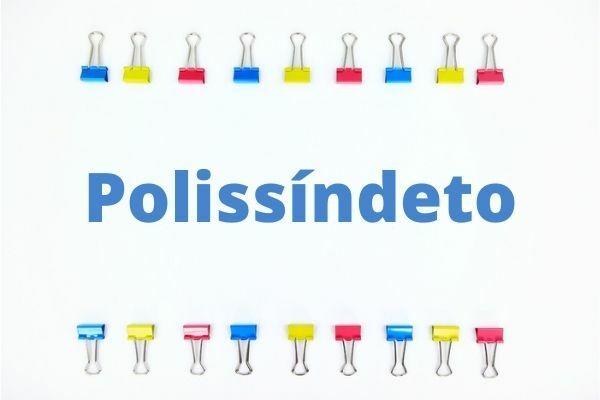polysyndeton and the figure of speech what repeatedly uses a conjunction so as to intensify the effect of the speech. This stylistic feature should not be confused with asyndeton or anaphora.
Read too: Hyperbate - figure of speech characterized by syntactic inversion
What is polysyndeton?
Polysyndeton is the construction figure characterized by the repetition of conjunctions, which often ends up generating an effect of intensification of speech. Watch:
- “For two days my phone hasn't spoken, nor listen, nor play, noin tuge, nor moo." (Ruben Braga)
- “While men exercise their rotten powers / Indians and priests and fags, blacks and women and teenagers make the carnival” (Caetano Veloso)
- “This building is not the work of kings, even though a king had commissioned me to design and build it, butnational, but popular, but of the Portuguese people [...]” (Alexandre Herculano)
In the respective excerpts from Rubem Braga's chronicle, from Caetano Veloso's song and from Alexandre Herculano's short story, we see different examples of polysyndetons. In both cases, there are
intensification of the idea of addition and reinforcement (with coordinating conjunctions additives “neither” and “and”) and contrast (with the adversative coordinating conjunction “but”).Do not stop now... There's more after the advertising ;)
Difference between polysyndeton and asyndeton
Unlike the polysyndeton, the asyndeton characterized by deliberate omission of conjunctions, which also generates an intensifying effect, often due to the feeling of unfinished business. Look:
"Your race wants to leave, / fight, suffer, win, come back." (Cecília Meireles)
In the above verse, the asyndeton occurs by the omission of conjunction in the sequence of actions, which generates the effect of constant movement.
Difference between polysyndeton and anaphora
THE anaphora is the figure of speech in which there is repetition of one or more words at the beginning of prayers or verses, not necessarily being the repetition of conjunctions. Note in the example below:
"Thus, thinking about it, time passes and we are left behind
Waiting, waiting, waiting
Waiting the sun, waiting the train
Waiting the increase from last year to next month"
(Chico Buarque)
In the verses above the song “Pedro Pedreiro”, the anaphora occurs with the term “expecting”, which is not a conjunction.
See too: Anacoluto – figure of speech characterized by the topicalization of a term at the beginning of the utterance

solved exercises
Question 1 - (UFBA)

The period "The street went on indefinitely, and the finger pointed, and I didn't know it, and she asked for urgency, saying that the fire was always plowing." (l. 14-16) presents, predominantly, independent clauses, coordinates, and the polysyndeton syntax figure.
( ) Right
( ) Wrong
Resolution
Right. The period, in fact, is mostly composed of coordinated prayers. The polysyndeton occurs through the repetition of the conjunction “and”.
Question 2 - (IF-PA)
rivers without speech
When a river cuts, it cuts once and for all
the river speech he made;
cut, the water breaks into pieces,
in water wells, in paralytic water.
In a well situation, the water is equivalent
to a word in dictionary situation:
isolated, sealed in its own well,
and because so tight, stuck;
and more: because stagnant like this, it changes,
and it changes because with none it communicates,
because the syntax of this river was cut,
the trickle of water for which he ran.
[...]
(MELO NETO, João Cabral de. Education through stone, p. 350-351)
The text rivers without speech it is metaphorical, and in more detail we can identify other figures of speech. Check the alternative whose excerpt from that text has a polysyndeton:
A) “When a river cuts, it cuts once
the river speech he made"
B) "In a well situation, water is equivalent
to a word in dictionary situation"
C) “and it changes because with none it communicates,
because the syntax of this river was cut,
the trickle of water why he ran.”
D) “cut, the water breaks into pieces,
in water wells, in paralytic water"
E) “and because it is so sealed, sealed;
and more: because stagnant like this, it changes,
and it changes because with none it communicates"
Resolution
Alternative E. The polysyndeton can be seen in the repetition of the conjunction “and” at the beginning of each verse.
By Guilherme Viana
grammar teacher


